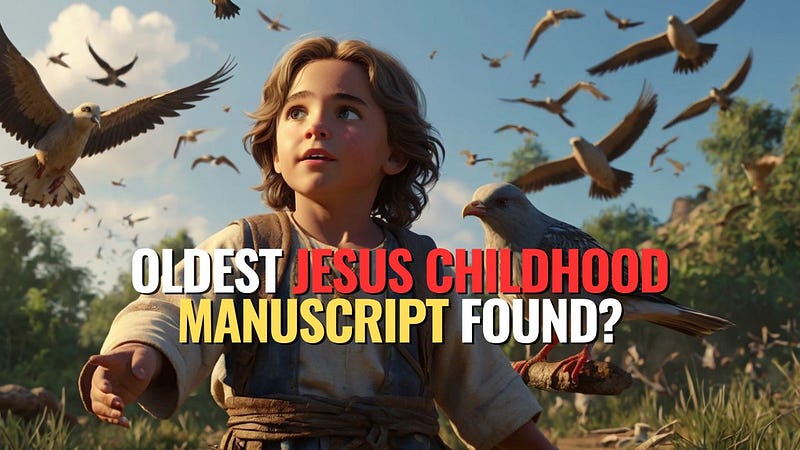# Remarkable Discovery: Ancient Manuscript of Jesus' Childhood
Written on
Chapter 1: Unveiling the Manuscript
A significant archaeological find has emerged in Germany, where experts have discovered a manuscript believed to be 1,600 years old, documenting the early life of Jesus Christ. Researchers assert that this is the oldest known text addressing the childhood of Jesus.

The earliest manuscripts of the New Testament hold immense value, serving as the primary sources for understanding the initial accounts of the Gospels, including the events surrounding Jesus Christ's life, death, and resurrection. The oldest known manuscript, the Codex Sinaiticus, is estimated to date back to the 4th century AD and is inscribed on calfskin, containing both the Septuagint and the New Testament.
Section 1.1: The Infancy Gospel of Thomas
Recently, researchers from Humboldt University in Berlin announced a remarkable discovery: they have identified a manuscript that is over 1,600 years old, which details the childhood of Jesus. For many years, a fragment of this scroll lay unrecognized in the Carl von Ossietzky State and University Library in Hamburg.
Interestingly, this manuscript is not part of the canonical Gospels. Instead, it belongs to the Infancy Gospel of Thomas, attributed to Thomas, one of the twelve apostles. According to biblical accounts, Thomas was absent when Jesus appeared to the other disciples. His initial skepticism—he claimed he would only believe upon seeing and touching Jesus’ wounds—was resolved when Jesus ultimately appeared to him, leading Thomas to proclaim, “My Lord and my God.”
Newly deciphered manuscript is the oldest written record of Jesus' childhood, revealing significant insights into early Christian texts.
Section 1.2: Historical Significance of the Manuscript
The newly identified manuscript is a version of the Infancy Gospel of Thomas, an apocryphal text likely written in the 2nd century. It recounts the miraculous events of Jesus' early years, particularly between the ages of five and twelve. Researchers emphasize the importance of this find, as it provides invaluable insights into the formative years of Christianity.
“So far, the oldest known Greek version of the Infancy Gospel of Thomas was an 11th-century codex. These stories, while not included in the Bible, were widely shared and popular during antiquity and the Middle Ages,” explained the researchers in a press release. “This fragment is extremely intriguing for scholarly research. Firstly, we have dated it to the 4th or 5th century, making it the earliest manuscript of this text,” stated Lajos Berkes, a theology lecturer at Humboldt University.
Chapter 2: Insights from the Manuscript
Jesus Christ's 1,600-year-old childhood manuscript discovered in Germany offers profound insights into early Christian narratives.
The manuscript fragment measures 11 x 5 centimeters and contains thirteen lines inscribed in Greek, averaging ten letters per line. Notably, this manuscript originates from Egypt.
“The papyrus had not been examined for a long time as its content was deemed unimportant. Initially, it was thought to be part of a mundane document, like a private letter, due to its seemingly clumsy handwriting,” remarked Berkes.
“Our attention was first drawn to the mention of ‘Jesus’ in the text. By comparing it to numerous other digitized manuscripts, we deciphered it gradually and quickly recognized its significance,” the historian elaborated. “After comparing this manuscript with other known versions of the Infancy Gospel of Thomas, we confirmed it is the earliest, based on a 2nd-century source.”
Researchers also determined that this manuscript was likely produced as part of writing exercises in a school or monastery, indicated by its uneven handwriting. The fragment describes a miracle where a young Jesus created clay birds, and when accused by a Jew of violating the Sabbath, he animated the clay figures, allowing them to fly away.
Attention all readers!
As content creators on Medium.com, we face minimal compensation for our hard work. If you find value in my articles, please consider supporting me on my “Buy Me a Coffee” page. Your small contributions can make a big difference in fueling my passion for creating quality content. Thank you for your support!

